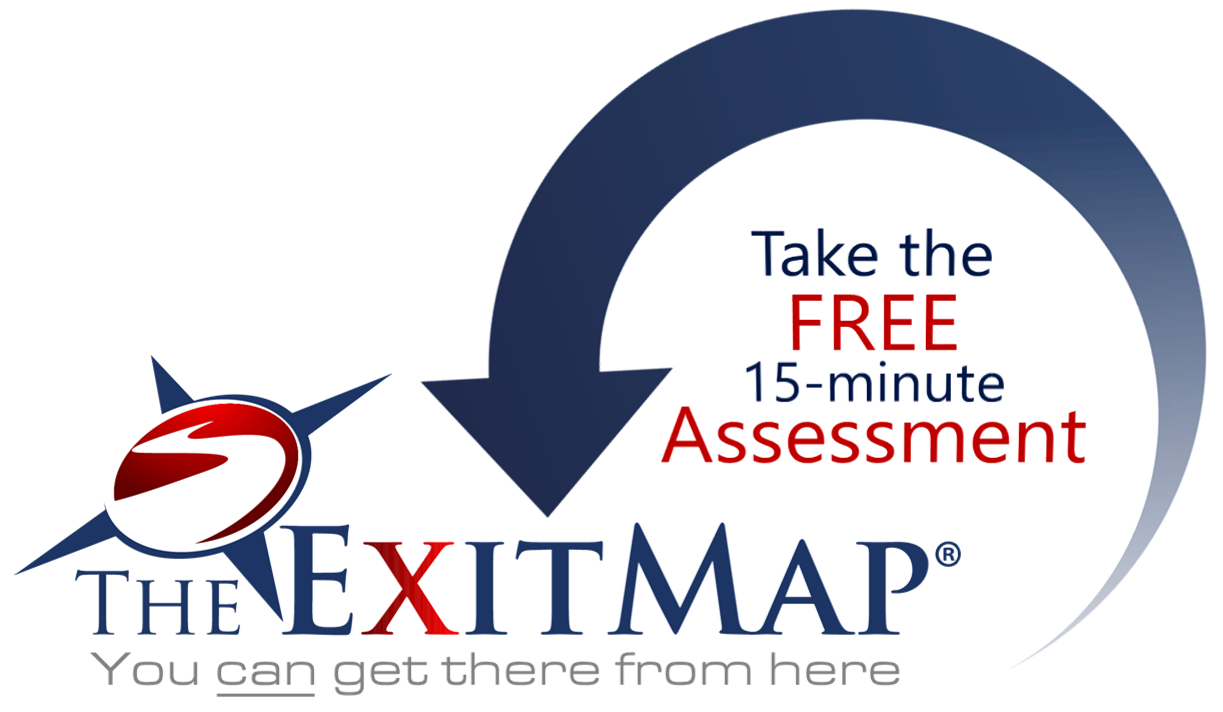 Exit Options: Internal Sales and Transfers
Exit Options: Internal Sales and Transfers
Exit Planning Tools for a Successful Transfer of your Company to Employees

Internal Sales and Transfers
 Why should you consider selling to employees? Because your company lives on with the culture you created. Because you can choose the value, not negotiate it. Because your employees aren’t comparing your company with other investments. Because you control the timing of your exit. Because it is probably the biggest financial transaction of your life.
Why should you consider selling to employees? Because your company lives on with the culture you created. Because you can choose the value, not negotiate it. Because your employees aren’t comparing your company with other investments. Because you control the timing of your exit. Because it is probably the biggest financial transaction of your life.
Many businesses have competent employees and managers, so why do so few owners ever sell to them? Most will answer “Because they have no money!” What if you could sell the business to employees, maintain control until the day you leave, and walk away with 100% of the value in your pocket on your last day of work?
 There are multiple strategies to successfully transfer a company to employees and with a minimum tax impact. They include:
There are multiple strategies to successfully transfer a company to employees and with a minimum tax impact. They include:
• Stock appreciation rights and phantom equity
• Employee Stock Ownership Plans (ESOP)
• Tax-deductible stock bonuses and grants
• SBA-financed management takeovers
• Private equity financing of leveraged buy outs
• Disproportionate partner distributions
Transferring Ownership
 There are several different methods considered industry standards when planning an exit that involves transferring ownership to employees who have no money and cannot qualify for a loan substantial enough to cover a buyout. All of them include some kind of long-term installment plan, someone else’s money or a combination of the two in order to affect the buyout of the owner.
There are several different methods considered industry standards when planning an exit that involves transferring ownership to employees who have no money and cannot qualify for a loan substantial enough to cover a buyout. All of them include some kind of long-term installment plan, someone else’s money or a combination of the two in order to affect the buyout of the owner.
The most common are ESOPs (Employee Stock Ownership Plans), Management LBOs (Leveraged Buyouts), Long-Term Installment Sales, and Modified Buyouts. For further details, please take a look at our page dedicated to White Papers and be sure to subscribe to the Awake at 2 o’clock? exit planning blog.
Selling to Employees: Is Your Exit Strategy Right in Front of You?
 If you have a company with reasonable cash flow, a talented management team and sufficient time, selling to employees is not only a realistic option; it may be the best way to get value from your business.
If you have a company with reasonable cash flow, a talented management team and sufficient time, selling to employees is not only a realistic option; it may be the best way to get value from your business.
Over the next 20 years, expect 150,000 owner retirements per year. Intermediaries (brokers, private equity and M&A) account for only about 9,000 transactions a year.
That leaves a lot of folks looking for a way to cash out. Selling to employees is a process that lets you keep control until retirement. By structuring the sale correctly, you can leave with the proceeds in the bank, not in a promissory note.
An owner has to accept that the only source of funding for any transaction is the cash flow of his or her company. If you use the current cash flow to help employees buy stock, in return they will work to increase the value of the business until your final return is equal to (or more than) what it was when you started.
The Parameters for a Successful Transfer to Employees
 Cash Flow: Your company has to be earning more than just your paycheck. Around $500,000 a year after owner’s compensation generally gives you enough to work with.
Cash Flow: Your company has to be earning more than just your paycheck. Around $500,000 a year after owner’s compensation generally gives you enough to work with.
Management Team: You need at least one decision maker who does more than just go through the operational motions because lenders want to be comfortable with company leadership when you’re gone.
Time Frame: Many business owners say, “I’ll think about exiting in five years.” That’s fine, if your plan is to retire in fifteen years.
Generally speaking, the longer you have, the more lucrative an internal sale can be. Three year plans are doable, but five is much more comfortable, eight years is even better, and we regularly work on transitions of ten years and longer.
Selling to employees requires legal agreements, specialized compensation plans and a willingness on the part of the owner to run the company transparently. The return is a team that is committed to the long term, highly motivated, and all on the same page when it comes to growing the business.
The ExitMap® Assessment for Business Owners
The First Step to Understanding the Complexities of Preparing a Company for Transition
The ExitMap® Assessment questionnaire consists of 22 questions and produces a high quality 12-page summary report which will be emailed to you. The report ranks the overall preparedness of a company for transition and provides a breakdown of the four major categories of readiness; Finance, Planning, Profit/Revenue and Operations. If you are a business owner just starting to think about exit planning or if you just want to know where you and your company stand, this is your first step.





